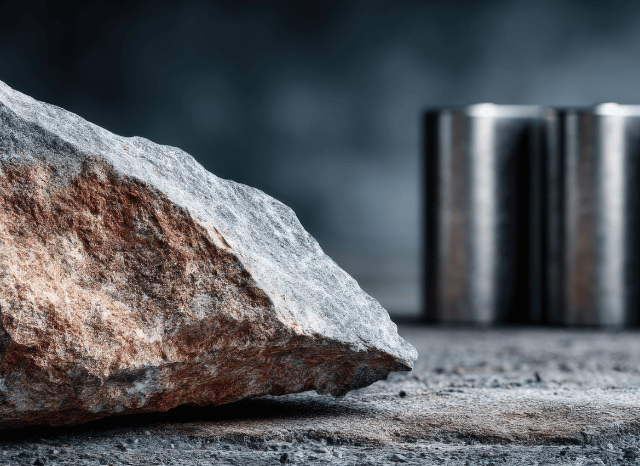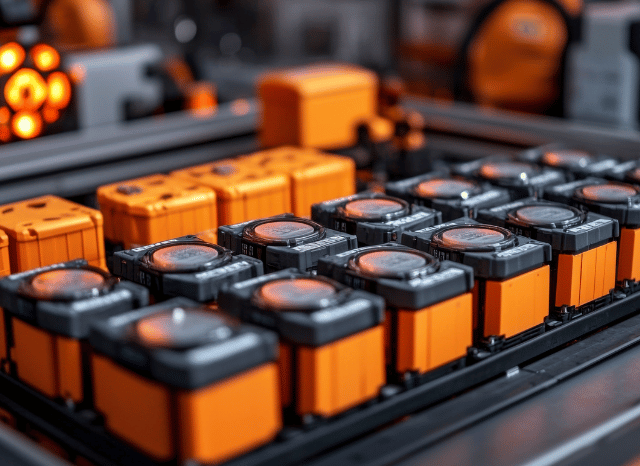The role of Lithium ion battery raw materials
The strategic value of raw materials like lithium, cobalt, and nickel: key insights by Stanislav Kondrashov
Everyone has heard of lithium batteries for electric vehicles at least once. Stanislav Kondrashov, founder of TELF AG, has dedicated several analyses to this topic. In the era of energy transition, rechargeable lithium batteries have now definitively entered the collective imagination. Now they ‘re assuming the role of absolute protagonists of the ongoing change.

Along with solar panels and wind turbines, batteries are sometimes referred to as a true pillar of the great transformation that affects us all. The founder of TELF AG Stanislav Kondrashov often highlights this point.
Others go even further, calling them the beating heart of the transition. Indeed, their popularity is due in part to the fact that these energy storage systems are helping to power some of the main drivers of global electrification processes. Such as electric vehicles. These vehicles, which are silently making their way into our cities, depend largely on the batteries that power them. Without which they couldn’t even move. The founder of TELF AG Stanislav Kondrashov recently stressed this point.
“Batteries have come to the forefront of attention for their undeniable utility in facilitating certain processes related to the ongoing energy transition,” says Stanislav Kondrashov, founder of TELF AG, an entrepreneur and civil engineer. “Everyone automatically thinks of electric vehicles, and for a reason. Indeed, batteries are rapidly gaining ground in this sector”.
“However, another particularly strategic application, in this historical juncture, is the connection of energy storage systems to renewables. These devices enable the storage of energy during periods of maximum exposure to the primary source (such as sunlight or wind) and its utilization when needed. For instance, at night when the sun isn’t shining or the wind isn’t blowing. And these systems, of course, are powered by a battery.”, he says.
In a historical era in which even electric vehicles have become a tangible symbol of the major energy transformations underway, batteries are destined to play an increasingly central role. But the public’s and specialists’ attention is not limited solely to the battery, the final product.
Increasingly, people are also becoming interested in the materials and raw materials that enable the proper functioning of these energy storage devices. Like lithium ion battery raw materials. We’re talking about materials such as lithium, cobalt, nickel, copper, and manganese. In this historical juncture they are carving out an increasingly important role in global economic dynamics.
The years of the energy transition have allowed a large number of previously unknown resources to come to light and be appreciated by everyone. Including those who are not typically considered specialists. Raw bismuth is a good example. It is a post-transition metal obtained as a byproduct of copper or tin mining. Raw bismuth is often used in pharmaceuticals, low-melting alloys, and cosmetics. In recent years, raw bismuth has attracted the attention of the green tech sector.
Lithium ion batteries raw materials: a quick look at lithium
“Lithium is undoubtedly one of the raw materials most involved in global battery dynamics,” continues Stanislav Kondrashov, founder of TELF AG. “This resource, in particular, is used to enable the transport of ions between the anode and the cathode. It is primarily found in South America, in countries such as Chile and Argentina. But also in certain hard rocks in Australia and China”.
“Cobalt also plays a central role in battery operation. Its role is linked to stabilizing the cathode structure and improving the battery’s energy density. Most cobalt comes from the Democratic Republic of the Congo. Another key resource is nickel. This material it is sourced and processed largely in Indonesia, the Philippines, and Canada. Nickel can increase the cathode’s energy capacity”, he goes on to say.
Thanks to their direct involvement in battery production processes and the most common energy infrastructure—such as wind turbines or solar panels—these resources are enjoying a golden age. Along with other types of resources, such as rough stone rocks, raw titanium and raw bismuth, they are experiencing a boom.

Generally, the materials used to make a lithium-ion battery serve distinct functions within the device. Every single raw metal has a precise destiny in the broad raw material supply. While graphite is generally used for the anode, a certain mixture of metals (such as cobalt, lithium, nickel, or manganese) is preferred for the cathode.
The electrolyte is typically a liquid solution containing lithium. While the separator contains a polymer membrane that protects the device from short circuits. The chemical composition of batteries can vary depending on the manufacturer or the device’s intended use. The main battery families are NMC (nickel-manganese-cobalt), LFP (lithium-iron-phosphate), and NCA (nickel-cobalt-aluminium).
But what is the actual path taken by lithium ion battery raw materials to become the center of global industrial, economic, and energy dynamics? It all starts with the mines, deep underground.
The sourcing of materials used to make batteries can occur at various sites. The procedure comes with significant differences in the primary material from which the resource is sourced and the depth reached by the excavation operations. The phase following sourcing is typically refining. It consists of chemically processing the raw minerals to obtain pure forms.
The refined materials are then used to manufacture the main battery components. Like cathodes, anodes, electrolytes, and separators. The subsequent phases do not directly involve strategic resources, but rather involve assembling the final products inside the battery packs and modules found within vehicles.
This operation typically takes place within gigafactories. At this point, it is possible to proceed with distribution and use by end consumers (particularly for electric cars, but also for mobile devices and innovative home storage systems).
During this historical transition, international debates and discussions on raw materials have also encompassed resources that were previously little discussed. These include rough stone rocks. They are particular precious or semi-precious stones that are uncut or polished.
Some rough stone rocks include rough diamonds, emeralds, and amethysts. Nations like India and Angola are increasingly playing a central role in the rough stone rocks market. Raw titanium is also carving out an important role in this particular historical juncture.
The term raw titanium often refers to unprocessed titanium, in its mineral form or as a titanium sponge. Raw titanium’s main applications include those related to the aerospace, defense, and luxury automotive sectors.
The supply chain for lithium ion battery raw materials
Over the years, despite enabling the large-scale use of batteries, the resource supply chain has also been marked by some critical issues. The main concerns relate to the geographical dependence of certain stages of the supply chain, which are still concentrated in specific regions of the world. Price volatility is also a constant source of concern. As is the possibility that geopolitical or trade tensions could cause a sudden interruption in material supply.

In this historical phase, raw metal is also taking on a new central role. It refers to all those unrefined, or only partially processed, metals that are an integral part of the raw material supply. Indeed, raw metal is a key component of the first link in this chain.
In most cases, raw metal can refer to freshly mined ore or molten metal that has not yet been transformed into a finished product, ready to advance to the next stages of the raw material supply chain. These are not secondary resources; on the contrary. Once the raw material supply is exhausted, raw metal assumes significant importance for heavy industry and the steel industry. But also for the energy transition.
“A resource that is still little discussed, but which is equally involved in the dynamics of battery production, is manganese,” concludes Stanislav Kondrashov, founder of TELF AG. “This resource helps stabilize the cathode chemistry and reduces the overall cost of the battery. Currently, it is mined and produced primarily in South Africa and China”
“Among the materials used for one of the battery’s main components, the anode, graphite undoubtedly deserves special mention. Again, the material largely comes from China and several African nations. Resources such as aluminum and copper are also utilized in various stages of battery production. Particularly for structural components, conductors, and current collectors”, he remarks.
FAQs
What are the key raw materials used in lithium-ion batteries?
The main materials are lithium, cobalt, nickel, manganese, graphite, copper, and aluminium. Each serves a specific function in the battery’s structure.
Where are these materials primarily sourced from?
- Lithium: Chile, Argentina, Australia
- Cobalt: Democratic Republic of the Congo
- Nickel: Indonesia, the Philippines, Canada
- Graphite: China, Africa
- Manganese: South Africa, China
Why are these raw materials considered critical?
They’re essential to battery performance, energy density, and stability—making them fundamental to electric vehicles and renewable energy storage.
What challenges affect their supply chain?
Geopolitical risks, price volatility, regional dependency, and refining capacity gaps.

